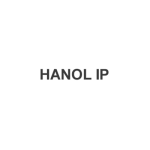From January 1 this year, the Korean Patent Court became the exclusive appellate court for IP related cases (see February issue). After this change, the Patent Court released some guidelines on the rules and procedures applicable to IP cases. The most recent is the "Guideline of Civil Practice and Procedure of the Patent Court of Korea" (the Guideline), which was published in English and Japanese.
The Guideline was prepared to facilitate expeditious and efficient civil appeal proceedings before the Patent Court. It is expected to give predictability to the interested parties and facilitate diligent preparation in appeal proceedings. The Guideline achieves similar purpose to the local patent rules of some US federal district courts, such as in Eastern Texas and Northern California.
As the Guideline was published in English and Japanese, it will be useful for foreigners who litigate IP matters in Korea. According to the statistics, about 30% of cases before Patent Court involve foreign parties (529 cases out of 2,784 total cases decided in 2014 and 2015) .
Specifically, the Guideline explains procedures about preparatory order, pre-hearing, oral hearings, evidence, mediation and preparation of documents (briefs and documentary evidence). In Korea, it is possible to raise new arguments and submit new evidence at the appellate court, and the Guideline details this procedure. When parties present new arguments and evidence at the appeal court, they must state reasons why they failed to do so in the lower court. In a case where the lower court held a preparatory hearing or designated a deadline for submission of arguments, a party who seeks to add new or modified arguments or evidence that had not been submitted at the lower court within such period must explain in detail why he failed to submit arguments and evidence. But the party must keep in mind that he could submit such arguments and evidence only when it does not cause a substantial delay in the appeal proceeding.
When necessary, the court may hold separate oral hearings on each specific issue or claim. For example, this is when: several claims are consolidated or several issues are in dispute; a hearing for claim construction should be conducted first because parties dispute the proper construction of claims; or it is necessary to hold hearings to specific issues.
IP litigation in Korea is a bifurcated system. Therefore, for the same patent, appeals from the civil infringement action and appeals from the Intellectual Property Trial and Appeal Board of the Korean Intellectual Property Office (IPTAB) may co-exist at the Patent Court. In such a case, when necessary, the court may examine both actions in parallel.
The Guideline also explains in detail about court-ordered document production, which was amended and became effective from June 30 2016. According to a party's request, the Court may order the other party to submit documents or materials (including electronic documents) necessary for proving infringement or calculating the amount of damages resulting from the infringing act (for example, accounting books, books relating to revenues or expenditures, contracts, tax invoices and statements of bank transactions). The court may determine the types and scope of materials to be submitted by comparing the adverse impact that the requesting party would suffer due to the lack of access to the materials and the adverse impact that disclosure of such materials would have on the disclosing party. If the disclosing party presents justifiable grounds, such as documents containing sensitive personal information or information that is not relevant to proving infringement or calculating the amount of damages, the Court may permit submitting documents by redacting corresponding portions. If the materials requested to be produced contain trade secrets, the Court may order the requesting party or its counsel to keep the contents of materials confidential by its ruling. We expect this foreign language guideline will become a useful resource for foreign companies that may initiate legal actions in Korea.
Min Son
Partner, Hanol IP & Law
HANOL Intellectual Property & Law
6th Floor, 163, Yang Jae Cheon-Ro, Gang Nam-Gu
Seoul 06302, Republic of Korea
Tel: +82 2 942 1100
Fax: +82 2 942 2600











